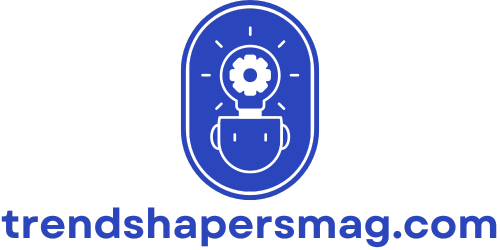Table of Contents
ToggleThe rise of remote work has transformed how businesses operate, bringing both opportunities and challenges. As companies adapt to this new landscape, effective management strategies become essential for maintaining productivity and team cohesion. Navigating the complexities of remote work requires a fresh approach to communication, collaboration, and accountability.
Remote work isn’t just about flexibility; it’s about creating an environment where employees feel supported and engaged. Leaders must implement tools and practices that foster connection and clarity, ensuring that teams can thrive regardless of their physical location. By embracing the right strategies, organizations can harness the full potential of their remote workforce, driving innovation and success in a rapidly changing world.
Understanding Remote Work
Remote work refers to a flexible work arrangement where employees perform their duties outside a traditional office setting. This model allows organizations to adapt to changing workplace dynamics and meet the needs of a diverse workforce.
Definition of Remote Work
Remote work encompasses various arrangements that allow employees to execute tasks from locations other than a designated office. This might include home offices, coworking spaces, or during travel. With advancements in technology and communication tools, remote work has become increasingly viable for many industries.
Benefits of Remote Work
- Increased Flexibility: Employees can manage their schedules, balancing personal obligations and work tasks efficiently.
- Cost Savings: Organizations can reduce overhead costs associated with maintaining physical office spaces.
- Wider Talent Pool: Companies can hire skilled professionals from diverse geographical regions, enhancing team diversity.
- Improved Work-Life Balance: Employees benefit from reduced commuting time, allowing them to invest more in personal and family life.
- Higher Productivity: Many remote workers report increased focus and productivity in a comfortable work environment.
Challenges in Managing Remote Work

Managing remote work involves specific challenges that can hinder team effectiveness. Identifying and addressing these obstacles is essential for sustaining productivity and collaboration.
Communication Barriers
Communication barriers often arise in remote settings. Misunderstandings can occur due to the lack of non-verbal cues, leading to confusion among team members. Reliance on tech tools can create gaps in information sharing, resulting in delays or incomplete project updates. Regular check-ins and clear communication protocols help mitigate these issues.
Maintaining Productivity
Maintaining productivity can be problematic in remote work environments. Distractions from home or the absence of a structured office atmosphere may reduce focus. Time management skills can falter when employees navigate flexible schedules without clear boundaries. Implementing productivity tools and establishing daily routines can enhance employees’ ability to stay on task and meet deadlines efficiently.
Best Practices for Managing Remote Work
Effective management of remote work hinges on establishing clear guidelines and utilizing the right technology. These practices promote productivity and streamline communication among team members.
Establishing Clear Expectations
Setting clear expectations fosters accountability and enhances performance in remote teams. Managers should:
- Define roles and responsibilities explicitly to avoid overlap and confusion.
- Communicate objectives and key performance indicators (KPIs) to align individual contributions with organizational goals.
- Set deadlines to maintain progress and encourage timely completion of tasks.
- Provide feedback regularly to support professional development and address any concerns proactively.
By clarifying expectations, organizations cultivate a culture of accountability, ensuring that team members understand their contributions to the overall mission.
Leveraging Technology
Harnessing technology enhances collaboration and communication in remote work settings. Key tools and practices include:
- Utilizing project management software, like Trello or Asana, to track progress and deadlines.
- Implementing video conferencing platforms, such as Zoom or Microsoft Teams, to facilitate face-to-face meetings and enhance team interactions.
- Incorporating instant messaging applications, like Slack or Discord, to foster quick communication and reduce email overload.
- Employing document-sharing solutions, such as Google Drive or Dropbox, to ensure easy access to important files and promote collaboration.
By leveraging technology effectively, organizations optimize remote work efficiency, fostering a connected workforce regardless of location.
Creating a Positive Remote Work Culture
Creating a positive remote work culture enhances productivity and employee satisfaction. Employers play a crucial role in shaping this environment through intentional strategies.
Encouraging Team Engagement
Encouraging team engagement boosts morale and strengthens connections among remote employees. Organizations can implement regular virtual meetings, where teams discuss progress and share achievements. Using collaborative tools, such as Slack or Microsoft Teams, fosters ongoing communication, allowing team members to interact informally. Recognizing individual contributions publicly also enhances motivation, creating a sense of belonging within the team. Arranging virtual team-building activities, like online games or themed challenges, encourages collaboration and camaraderie, further enhancing engagement in a remote setting.
Promoting Work-Life Balance
Promoting work-life balance is essential for sustaining employee well-being in a remote environment. Employers can encourage flexible schedules, allowing employees to manage their time effectively. Setting clear boundaries for work hours prevents burnout and improves productivity. Providing resources for mental health support, such as access to counseling services or wellness programs, demonstrates an organization’s commitment to employee health. Additionally, encouraging regular breaks and time off helps employees recharge, ultimately enhancing job satisfaction and efficiency in their roles.
Successfully managing remote work requires a thoughtful approach that prioritizes communication and collaboration. By creating a supportive environment and leveraging the right tools, organizations can enhance team dynamics and drive productivity.
Encouraging engagement and promoting work-life balance are crucial for employee satisfaction. With clear expectations and regular feedback, remote teams can thrive in their roles.
As businesses continue to adapt to this evolving landscape, embracing effective management strategies will be key to unlocking the full potential of a remote workforce.







